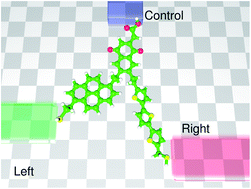Abstract
A single molecule composed of three linked moieties can function as an amplifier of electrical current, when certain conditions are met by the molecular orbitals of the three component parts. This device should exhibit power gain at appropriate voltages. In this work, we will explain a plausible mechanism by which this device should work, and present its operating characteristics. In particular, we find that a fundamental requirement for current amplification is to have the LUMO of the central moiety more strongly coupled to a control electrode than it is to the other orbitals in the molecule, while the HOMO of this moiety should be more strongly coupled to the orbitals in the other moieties than it is to the control electrode.


 Please wait while we load your content...
Please wait while we load your content...